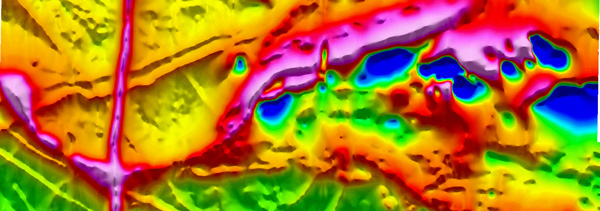 Aeromagnetic data from the BGB
Aeromagnetic data from the BGB
Paleoarchean bedrock lithologies across the Makhonjwa Mountains of South Africa and Swaziland linked to geochemical, magnetic and tectonic data reveal early plate tectonic genes flanking subduction margins
Abstract
The Makhonjwa Mountains, traditionally referred to as the Barberton Greenstone Belt, retain an iconic Paleoarchean archive against which numerical models of early earth geodynamics can be tested. We present new geologic and structural maps, geochemical plots, geo- and thermo-chronology, and geophysical data from seven silicic, mafic to ultramafic complexes separated by major shear systems across the southern Makhonjwa Mountains. All reveal signs of modern oceanic back-arc crust and subduction-related processes. We compare the rates of processes determined from this data and balance these against plate tectonic and plume related models. Robust rates of both horizontal and vertical tectonic processes derived from the Makhonjwa Mountain complexes are similar, well within an order of magnitude, to those encountered across modern oceanic and orogenic terrains flanking Western Pacific-like subduction zones. We conclude that plate tectonics and linked plate-boundary processes were well established by 3.2–3.6 Ga. Our work provides new constraints for modellers with rates of a ‘basket’ of processes against which to test Paleoarchean geodynamic models over a time period close to the length of the Phanerozoic.